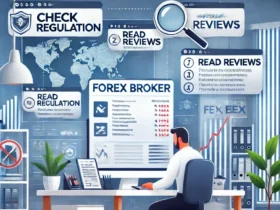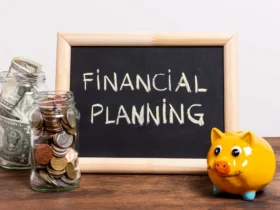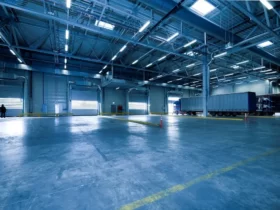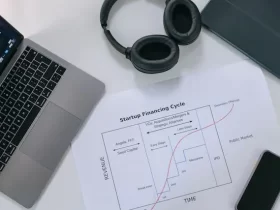All economic factors that influence commercial and consumer behavior are referred to as the Economic Environment. Both external influences in the immediate marketplace and the broader economy make up the economic condition. These variables will influence how a business operates and how competitive it’ll become.
For different individuals, the economic world consists of different aspects. The weather and fertilizer prices, for example, are critical aspects for a farmer.
For a television station, however, the growth of Internet ads is extremely important, but the weather is not. Since the Internet competes for advertising dollars, Internet advertising is essential to a television station. Advertising media, on the other hand, is unimportant to a farmer.
The word “Economic Environment” refers to all external economic factors that influence customer and business purchasing habits, and thus affect a company’s efficiency. These factors may be large-scale (macro) or small-scale (micro) and are often outside the control of the company.
A market’s Economic Environment is a set of global economic factors that have an effect on all businesses and consumers. These change over time depending on the nation, area, and industry. In general, it is tougher to begin or develop a company when economic conditions are poor. The components of the economic condition are as follows.
Interest Rates
Interest rates do have a great impact on the cost of capital for each and every business. It has an effect on capital expenditures and competitiveness. Businesses will expand if interest rates fall. As they rise, companies are more likely to contract or collapse.
Credit Conditions
These are the conditions that cover the capacity of a bank to lend and how much can it is willing to offer. Credit has a tendency to cycle between fast lending and tightening. This is driven by banks’ liquidity and risk perceptions.
Business Confidence
Business confidence is what company executives think about potential prospects and risks. Optimism ultimately leads to increased capital investment and competition. Cutbacks and divestitures are the product of pessimism.
Business Cycle
In industry, the rise and fall of production. Most companies go through a period in which supply grows, resulting in fierce competition and lower prices. When rates fall too much, companies cut back on capital and labor, reducing supply.
Consumer Confidence
Consumer confidence is how investors feel about the future of their economy. More positive consumers spend greater, invest a bit, and take on more debt. Pessimistic shoppers save, pay down debt, and spend a bit.
Factors of Economic Environment
In the event that you want to know about the main factors of the Economic Environment then no problem! These factors incorporate microeconomic and macroeconomic.
Microeconomic factors
Things that occur at the individual business or customer level are referred to as the microeconomic environment. Microeconomic variables have little effect on the economy as a whole. Some microeconomic factors that may have an effect on a company are mentioned below:
• Demand
• Competitors
• Market size
• Supply
• Suppliers
• The distribution chain, or how you get your products, is important. For instance, retail stores, distributors, the Internet, and so on.
Macroeconomic factors
The macroeconomic environment, nevertheless, encompasses all that has an effect on the entire economy. Macroeconomics is concerned with factors that have a wide impact on the economy. Like:
• Inflation
• Unemployment
• Interest rates
• GDP growth. Gross Domestic Product is the abbreviation for Gross Domestic Product. To put it another way, is the economy in a slump, booming, etc.?
• Taxes.
• Exchange rates, i.e., how much one currency is worth in comparison to another.
• How much disposable income customers have left after paying taxes, social security, and other expenses?
• Consumer confidence levels.
• Savings rates.
• The economic condition is beyond the reach of business people. They should, however, determine market conditions before determining whether or not to follow a strategy or project.
Difference Between Economic Environment and environmental economics
The terms Economic Environment and environmental economics are not interchangeable. Despite their similarity in tone, their meanings are vastly different.
Environmental economics is a branch of economics dedicated to the study of problems linked with the environment. In the twentieth century, environmental economics got a lot of attention.Environmental economics is an approach that studies the international economic state. It also focuses on the international and local environmental policies. Not just that, it covers the price and advantages of the other environmental policies. It covers all the environmental issues.
Both concepts seek to identify areas where economics and the environment can collaborate to solve problems. They have common aims, but they use different methodologies and systems to achieve them.
When it comes to incorporating the environment into economic decision-making, these economic niches vary in their value judgments.
Both approaches have a promising future ahead of them, and both have played crucial roles in shaping the environmental debate.
The Economic Environment has the advantage of being able to express value in monetary terms. Money speaks; it is the common language of powerful decision-makers. This is a very significant benefit.
However, this economic condition is based on a neoclassical paradigm. It is quite a drawback if you pay attention to it. It is arguable that this paradigm could be the root of diverse economic, social and environmental problems. Is this kind of neoclassical reasoning likely to produce solutions? This is a significant thing to remember.
Environmental economics has the advantage of including a clear and easy narrative. In simple words, society will deplete renewable resources if it compensates for the loss by increasing the stocks of renewable resources.
When it comes to the drawbacks then environmental economics surely has many. However, one of the environmental economics’ drawbacks is its difficulty in communicating knowledge in everyday economic terms. The concept of environmental economics differs significantly from that of traditional economics.
Conclusion
Overall, particular preferences play a role in determining which system works superior. Both contribute immensely to making the planet a better place. Furthermore, these ideas have more hope for the future than doing nothing or continuing with business as normal. It’s important to keep in mind that both environmental economics and Economic Environment concepts can be useful in critiquing each other.












Leave a Reply